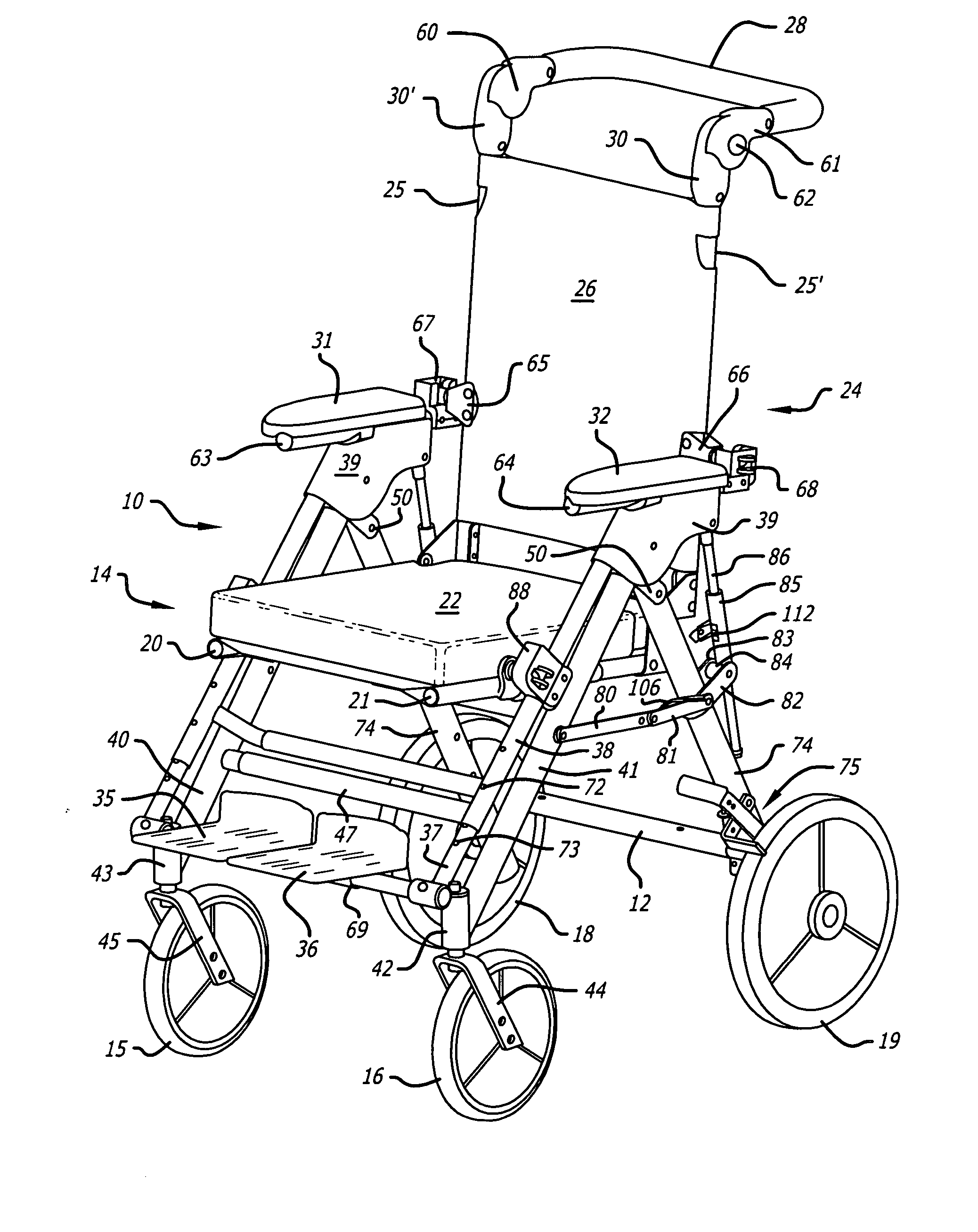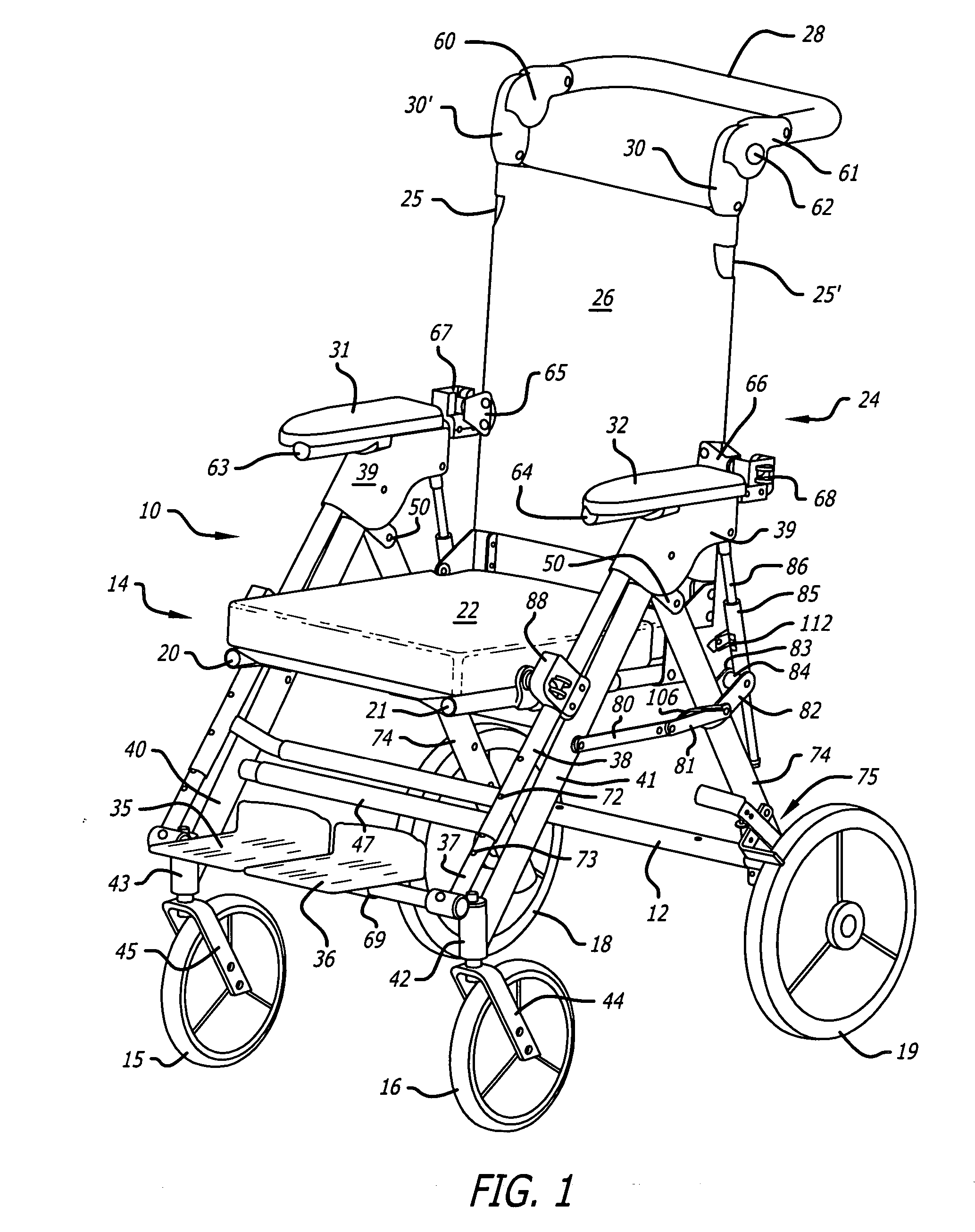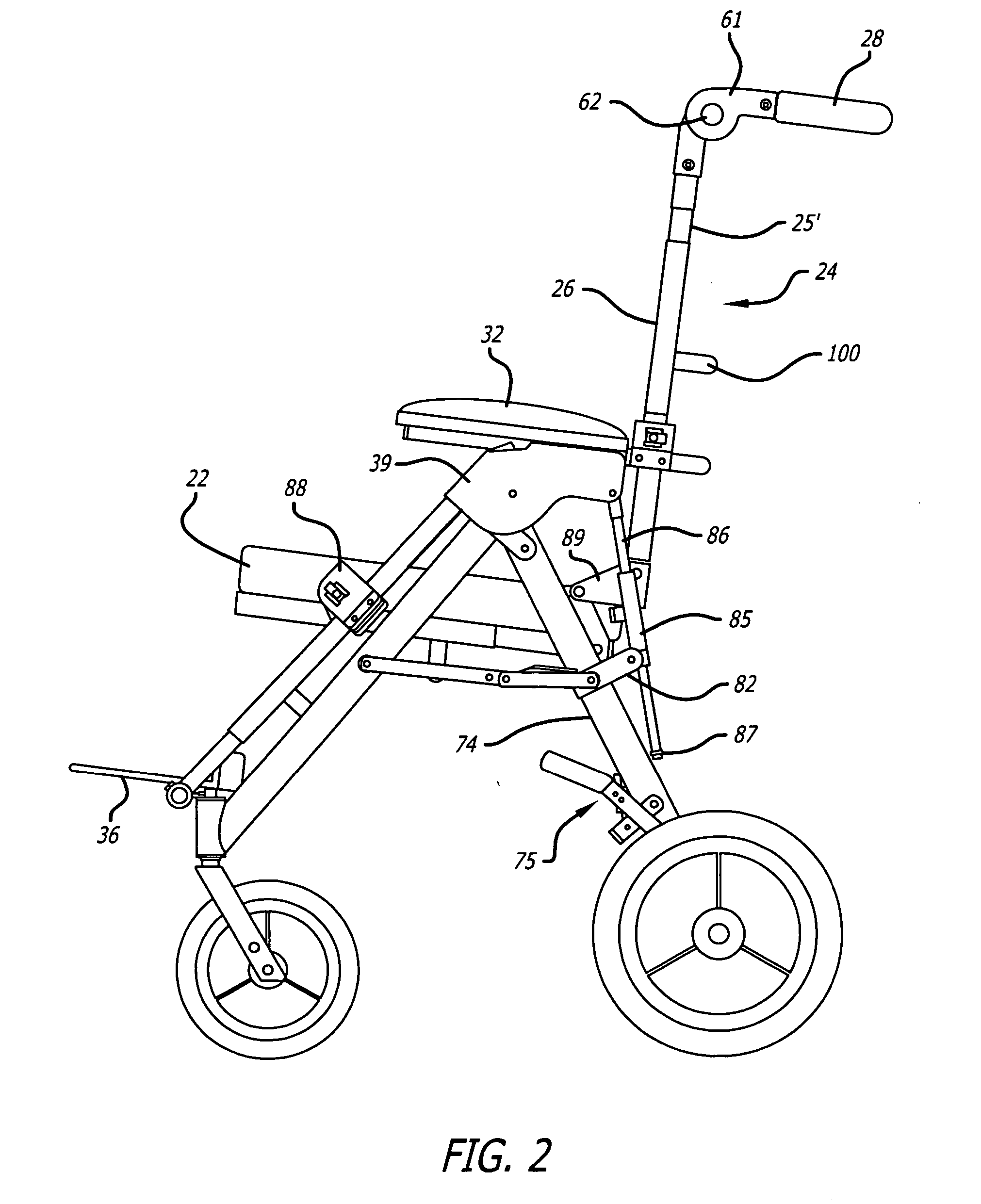Center-of-gravity tilt-in-space wheelchair
a wheelchair and center of gravity technology, applied in the field of wheelchairs, can solve the problems of pressure sores, decubitus ulcers, and requires effort on the part of attendants, and achieve the effects of quick and easy removal, easy folding, and easy removal of the same lighter and easier
- Summary
- Abstract
- Description
- Claims
- Application Information
AI Technical Summary
Benefits of technology
Problems solved by technology
Method used
Image
Examples
Embodiment Construction
[0040] Referring now to FIG. 1 of the drawing, a tilt-in-space center-of-gravity wheelchair 10 in accordance with the teachings of the invention is shown. The wheelchair 10 has a base frame 12 and a seat assembly 14 supported by base frame 12. Base frame 12 is supported on a supporting surface by wheels, such as a pair of spaced front casters 15, 16, and spaced rear wheels 18, 19.
[0041] The seat assembly 14 has a seat frame in the form of spaced longitudinally extending tubes 20, 21 (see also FIG. 6) for supporting a seat 22. Any suitable seat may be provided, such as the planar seat shown in FIG. 1. Such seat may be semi-rigid or rigid, padded, contoured, foldable, a contoured profile seat, or a lightweight sling seat as is well known in the wheelchair art. The seat frame also includes a seat back 24 comprises of a pair of spaced rods 25, 25′ supporting therebetween a back support 26 (see also FIG. 2). A U-shaped rod 100 may interconnect rods 25, 25′. Back support 26 may be padded...
PUM
 Login to View More
Login to View More Abstract
Description
Claims
Application Information
 Login to View More
Login to View More - R&D
- Intellectual Property
- Life Sciences
- Materials
- Tech Scout
- Unparalleled Data Quality
- Higher Quality Content
- 60% Fewer Hallucinations
Browse by: Latest US Patents, China's latest patents, Technical Efficacy Thesaurus, Application Domain, Technology Topic, Popular Technical Reports.
© 2025 PatSnap. All rights reserved.Legal|Privacy policy|Modern Slavery Act Transparency Statement|Sitemap|About US| Contact US: help@patsnap.com



